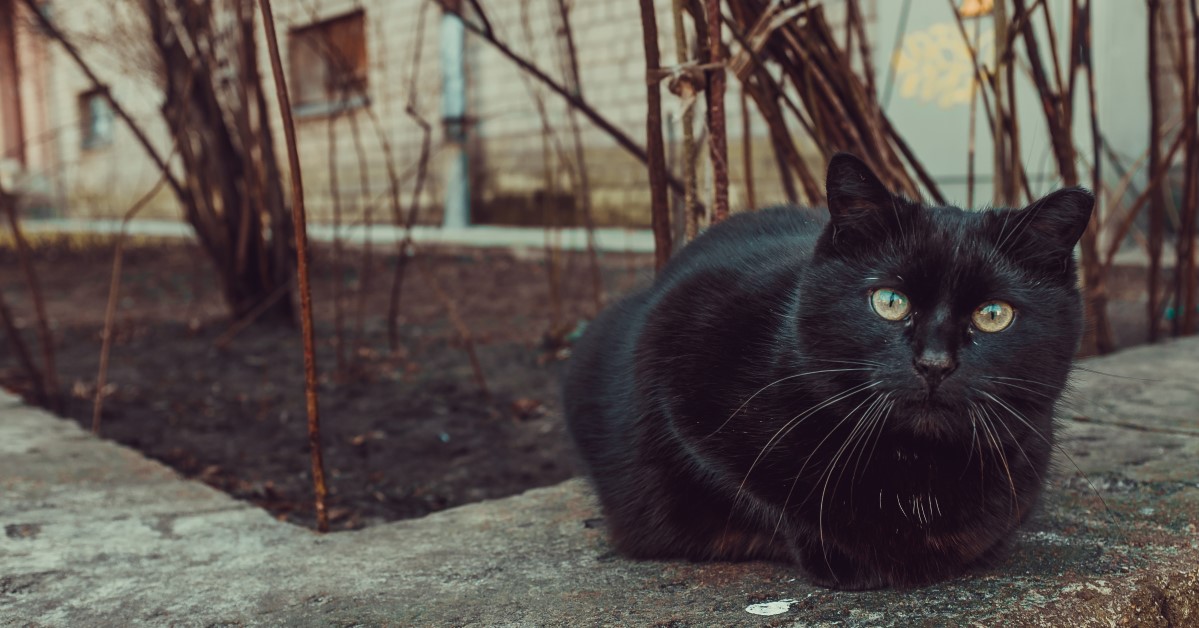What to Feed Stray Cats: Tips for Concerned Animal Lovers
You can help a stray cat thrive once you've digested these tips on what and how to feed it.

When you feed stray cats, you're helping those free-roaming kitties in several ways. In addition to giving them the essential calories and nutrients they need to survive, it permits you to observe them as they feed, noting any likely pregnancies or obvious health problems. You're also in a better position to trap them and submit them to your local vet for spaying, neutering, and other preventative wellness care. Let's look at some smart stray cat feeding tips.
Cat Food Versus Dog Food and Human Food
If you have no experience with cats and you're feeding a stray or feral cat for the first time, you may wonder what kind of food you should or shouldn't give them. First of all, cats aren't dogs and can't get the nutritional balance they need from dog food. Additionally, cats aren't humans and shouldn't have most of the foods humans enjoy. In fact, many common human foods, from onions and garlic to baked goods containing yeast, can prove downright toxic to them.
Cats are carnivores, meaning that they need to get all their nutrients from meat. You can feed a stray cat the occasional bit of canned tuna or unseasoned lean chicken meat. But to play it safe, stick to commercial cat food products that claim to offer a balanced mix of nutrients.
Despite what you may have seen or heard, you don't want to feed a stray cat (or any cat) milk or cream. Most cats have trouble digesting lactose. Water is the only beverage they need.
Dry Food Versus Wet Food
Stray cats may have limited access to both food and water. Although you should always give your stray cat water as well as food, canned wet food offers extra moisture to aid in a cat's hydration. (It can also be easier to eat for cats with dental challenges.) Wet food also smells stronger, encouraging human-shy street cats to take a chance on your hospitality.
Dry food (kibble) has its own advantages. It leaves less of a mess for you to clean up, it's easier to serve, and it won't dry out. It also attracts fewer bugs in the spring and summer months, when such pests are most active. Consider feeding your stray cat an all-kibble diet in warm weather and a mix of wet and dry food in cooler weather.
Portion Sizes and Mealtimes
Most adult cats need no more than two daily meals. Depending on the time of year and your own preference, you can offer your stray cat a small can of wet food for one meal and about two ounces of dry food for its other meal. Or, you can simply serve a quarter-cup of dry food twice a day. If your stray cat feeding routine includes feeding kittens, those little fuzz balls will likely need more calories spread out over multiple daily feedings.
To avoid turning your home into a vermin refuge, set out food for stray cats during the daylight hours, leaving the bowls out for no more than thirty minutes to an hour at a time. Take special care not to leave food or water out overnight. If you want to keep track of how many stray cats you're feeding on a consistent basis, make a point of setting meals out at the same time each day.
Even among adult felines, individual appetites and energy requirements can vary. Pay attention to how much food a stray cat leaves after feeding so you can adjust future portion sizes accordingly. Throw any leftover food away immediately, giving the food bowl and surrounding area a thorough cleaning. This hygiene practice not only helps to protect the cats against disease; it also helps you keep pest infestation issues under control.
Making Feeding Time More Pleasant
You wouldn't want to eat out of an ant-covered food bowl or struggle to extract water from a frozen water bowl -- and neither will your feral feline friends. Fortunately, you can take some extra steps to minimize these issues so your stray cats can enjoy their feeding times to the fullest.
You can find many kinds of ant-proof pet bowls at your local pet store. However, you can also make your own simply by placing the food bowl inside a slightly larger metal bowl, which you then fill with water. The water acts as a "moat," drowning the ants before they can crawl up the sides of the food bowl. A heated water bowl can solve the ice problem. To keep food and kitties dry on rainy days, create a covered feeder by turning an open-ended container up-side down and cutting an entrance/exit in one side.
Your Local Animal Professionals Can Help
If you have concerns about the health and safety of a stray cat, ask your local shelter or experienced animal control professionals to help you trap it so you can take it to your veterinarian. The vet can check the cat's health, spay or neuter it as needed, treat any diseases or injuries, and check to see whether it has a microchip that might trace it back to its owner. Who knows -- that occasional backyard visitor might even turn into a beloved indoor family member!
Ready to start saving money on pet wellness care?
Then take a look at Mint Wellness, the pet wellness plan that provides fast reimbursement on routine pet care. Save on vaccinations, wellness exams, preventatives, dental, and more!
Learn More

